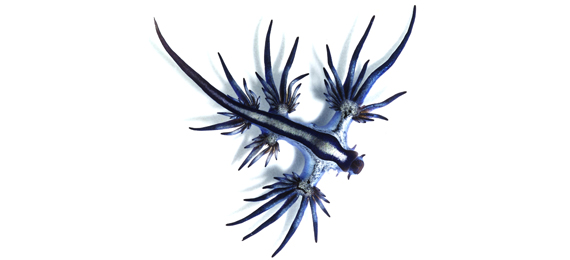
Sea swallow, blue angel, blue dragon, blue sea slug, and blue dragon sea slug, it has so many other names. But what is it actually? This article discusses some important glaucus atlanticus facts. These fun and interesting blue dragon facts will help you know everything about them.
What Is a Blue Dragon?
A blue dragon is a small species of blue sea slug which is a pelagic aeolid nudibranch. They are carried along by ocean currents while floating upside down by using the surface tension of the water in order to stay up. They float by swallowing air and holding it in their stomach.
Where Do Sea Slugs Live?
You can find sea slugs in the Atlantic, Pacific, and Indian Ocean in warm tropical waters.
What Does a Sea Slug Look Like?
- A. Have Soft Bodies
- B. Have Rough Bodies
- C. Have Sharp Spikes
- D. Have Golden Stripes
Blue Dragon Facts
1)Blue Dragons have radular teeth, 1.2 inches long, capable of eating larger creatures with serrated edges.
2) Sea slugs use countershading to escape predators, with blue dragons facing upwards to blend with water, and silver/grey dragons facing downwards to camouflage with sunlight.
3) Sea slugs store stinging nematocysts, like venomous siphonophores and Portuguese man o’wars, to defend themselves when touched. Blue dragons release these stinging cells, which can be stronger than man o’war hydrozoa.
4) Groups of blue dragons float among the siphonophores they feed on and create a formation called “blue fleets”.
5) Blue dragons curl into balls when pushed towards the beach, causing fiery stings to humans attempting contact. Their venom remains active even after death.
6) Researchers predicted the range of blue dragons, 93 miles farther north into the Bay of California. Its existence was confirmed after fishers caught them while fishing in 2015.
7) They were spotted again twice in the same year, South Padre Island in May 2020 and Cape Town, South Africa, in November 2020.
8) These blue dragons are hermaphrodites, which means they have both male and female reproductive organs.
9) Once they mate with the bends in their penises resulting in strings of 20 eggs.
10) It might look beautiful, but if you thought of having it in your home aquarium, it is not possible. Firstly because of their poisonous string. Secondly, because you cannot find the right food according to their dietary needs.
11) The lifespan of a Blue Dragon Sea Slugs is between one month and one year long.
12) The Blue Dragons mostly feed on JellyFish such as Man o’ Wars. While they are eating, they keep the stinging cells called the nematocysts.